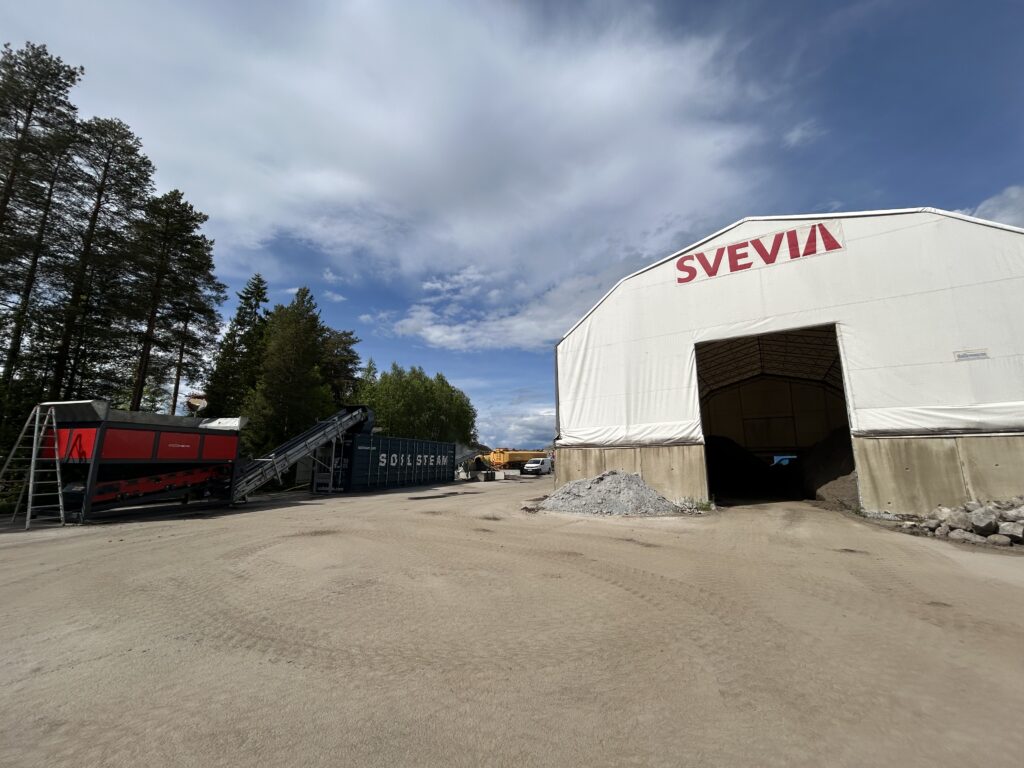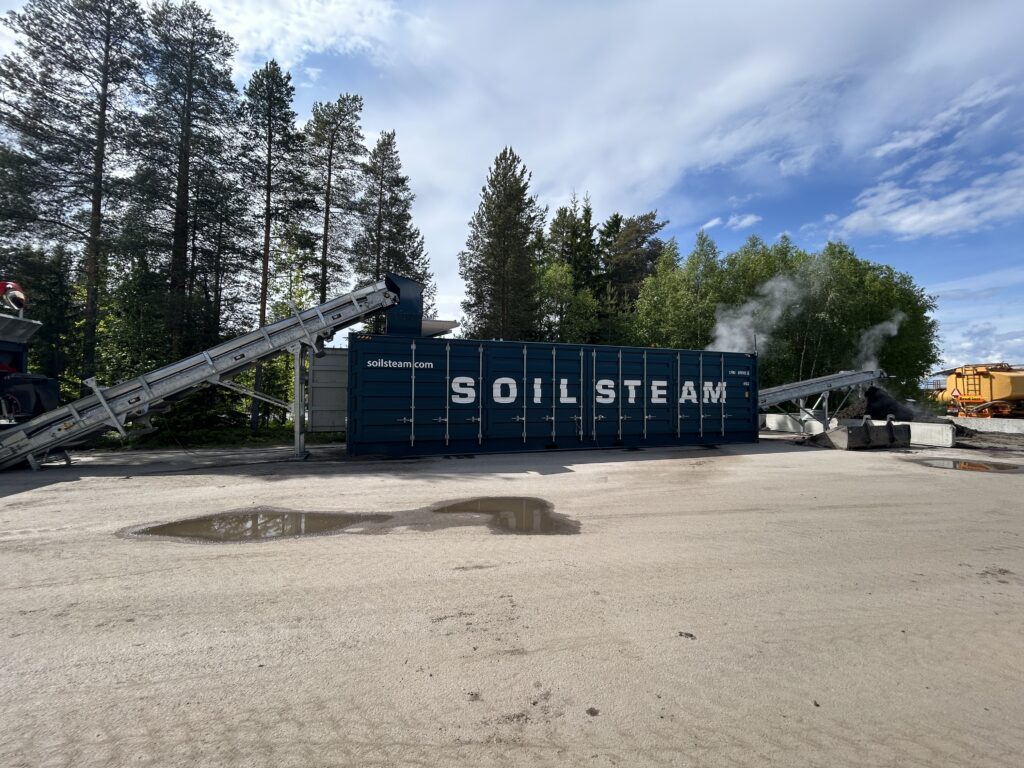In June 2025, the Swedish Transport Administration (Trafikverket), together with infrastructure contractor Svevia, conducted a test of SoilSteam’s SoilSaver machine in Umeå. The aim was to explore whether this method could become a future solution for treating soil contaminated with seeds and plant material from lupins – an invasive species that spreads rapidly along Swedish roads and construction sites.

Soil recovery as an alternative to costly landfilling
Instead of transporting the soil to landfill – which is both expensive and environmentally taxing – the masses were treated directly on site using heat. The SoilSaver technology uses hot water vapor to eliminate biological contaminants, without chemicals, while preserving the soil’s structure and function as a growing medium.
The project was carried out as planned in terms of time and budget. Trafikverket views the technology as a potential way to reduce the high costs associated with current practices:
“This is about finding out whether we can handle the soil on site at a reasonable cost instead of hauling it away and burying it in landfill, which is expensive,” says Claes Dahlgren, national coordinator for invasive species at Trafikverket.
“The landfill cost alone is around 1,500 SEK per ton,” he adds.
– Landfilling costs several times more than treatment
Hans Kristian Westrum from SoilSteam comments:
“We see time and again that recovering soil with our SoilSaver makes projects more sustainable – not only environmentally and ecologically, but also economically.
Our treatment cost is just a few hundred NOK per ton. In this project, the landfill cost alone was several times higher than the treatment cost.We have to stop landfilling material that is cheap and easy to recover. Landfills should be reserved for waste we cannot recycle – not for valuable resources that can be reused with minimal effort,” Westrum concludes.

Next steps
Trafikverket will follow up the project throughout the summer and fall to assess the results. Key questions include whether the lupins are effectively eliminated – and whether the treated soil remains suitable for grass and plant growth.
SoilSteam looks forward to the outcome and hopes the SoilSaver can become a useful tool in Sweden’s efforts to manage invasive species through circular, cost-effective and environmentally responsible practices.
Read more from Trafikverket here:
New method tested to stop the spread of invasive plants – Trafikverket (in Swedish)